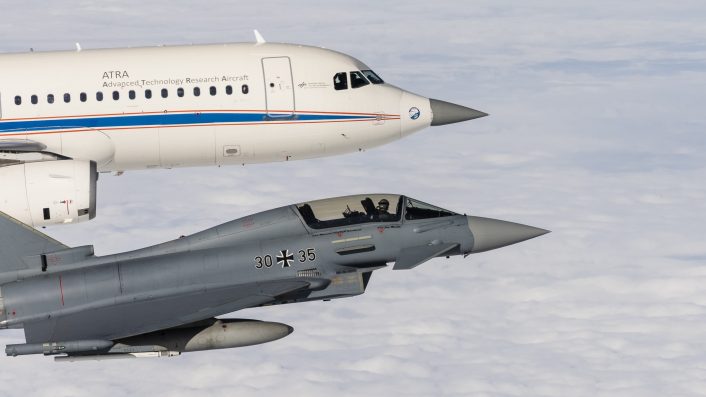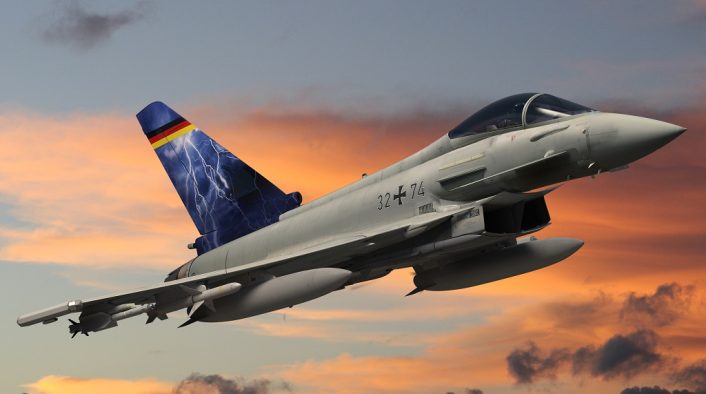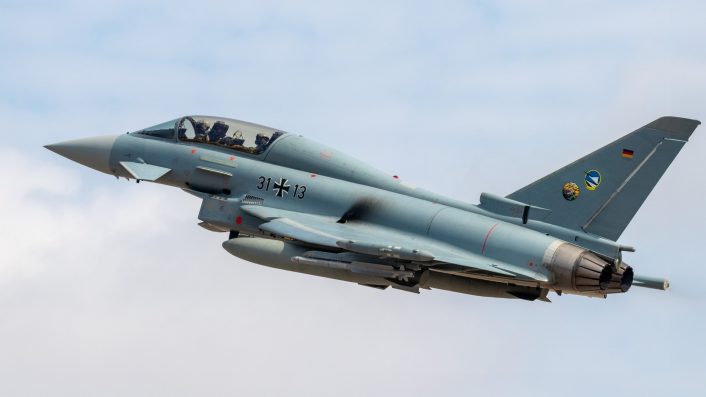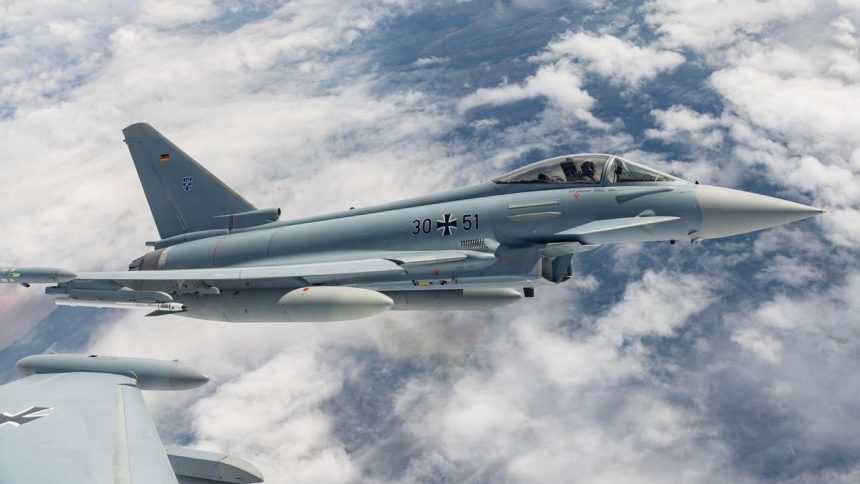Germany has approved the procurement of 20 Eurofighters of the Tranche 5 for €3.75 billion, as well as well as the Eurofighter EK variant’s development.
A year after the announcement at ILA Berlin Air Show 2024, the Budget Committee of the German Bundestag approved on Oct. 8, 2025, the procurement of 20 additional Eurofighters (Germany does not use the name Typhoon), as part of the Tranche 5, equipped with the new AESA radar. The contract is worth €3.75 billion ($4.36 billion) and the deliveries are planned from 2031 to 2034, according to the press release of the Ministry of Defense.
New contracts have also been placed for flight and tactical simulators to “improve the simulation environment and simultaneously prepare it for training in the new capabilities of future developments of the Eurofighter weapon system.” Specifically, a €412 million ($479 million) contract will ensure the new E-Scan radar can be accurately replicated in the simulator.
Tranche 5
The then German Chancellor Olaf Scholz announced during the opening of the ILA Berlin Air Show 2024 the order of the Eurofighter Tranche 5 by the end of 2025, in addition to the 38 ordered as part of Project Quadriga. Scholz described the deal as part of the commitment to maintaining and expanding arms production capacity, as well as strengthening Germany’s commitment to NATO.
As mentioned by the MoD, these aircraft will also receive the new European Common Radar System (ECRS) Mk 1 AESA (Active Electronically Scanned Array) radar, also known as the E-Scan. This radar, currently in testing, is set to be equipped by German and Spanish Eurofighters.

These new aircraft will likely be in the Phase 4 Enhancement (P4E) configuration, also announced last year. This contains a number of new developments, including an automated sensor management capability for all Typhoon radars that will allow to exploit the capabilities of the new AESA radar to complete multiple simultaneous tasks, while reducing the pilot workload.
The package is also said to include an improved cockpit interface and enhanced Radio Frequency Interoperability (RFIO), which will improve survivability and lethality. While the development of a Large Area Display for the Typhoon has been confirmed, it is unknown at this time if it will be included in the new improved cockpit interface.
In addition to the automated sensor management capability, P4E will introduce DASS (Defensive Aids Sub-System) upgrades for all customers and includes the IOC (Initial Operating Capability) for the additional German electronic warfare capability. As we previously reported here at The Aviationist, Germany is working on a dedicated Suppression of Enemy Air Defenses (SEAD) variant of the aircraft, dubbed Eurofighter EK.
Notably, the MoD explained that “The procurement of Tranche 5 serves to gradually transfer the capabilities of the aging Tornado fighter jet in the area of Electronic Combat and Reconnaissance (ECR) into a future-proof platform with which Germany will continue fulfill its obligations to NATO.”

Eurofighter EK
In addition to the Tranche 5, Germany has also approved a contract to continue the work on the Eurofighter EK. This variant was initially green-lighted by the German Government in 2023, after Airbus announced its development as the Eurofighter ECR (Electronic Combat/Reconnaissance) in 2019.
The Eurofighter EK is a dedicated Suppression of Enemy Air Defenses (SEAD) variant which is being developed as the successor to the Tornado ECR. Airbus will equip 15 German Eurofighters for electronic combat, which will be NATO-certified by 2030 and will then replace the Tornado ECR in the SEAD role.
The Eurofighter EK will use the AGM-88E AARGM, the Saab Arexis Electronic Warfare suite and other technologies developed by small and medium-sized enterprises and a start-up. Notably, these include an AI solution that makes it possible to analyze radar data on-board and quickly determine precise self-protection measures.
Further confirming this, the MoD said “The Eurofighter is to be optimized with the AREXIS self-protection system and corresponding air-to-ground guided missiles and further enabled for electronic warfare.” Arexis, which is equipped with high-power gallium nitride GaN AESAs and ultra-wideband receivers and Digital Radio Frequency Memories (DRFMs) and is said to be capable of neutralizing Anti Access/Area Denial (A2/AD) systems, will replace the two wingtip pods of the Eurofighter.

The development of the project, scheduled to run until 2033, requires €1.13 billion ($1.31 billion), says the MoD, while the procurement of the components is estimated at €82 million ($95 million). This confirms the previously disclosed timeline of the aircraft being fielded in the early 2030s.
It now appears that the 15 jets already planned to become Eurofighter EKs will be taken from the inventory of aircraft already in service and will be converted. The Tranche 5 aircraft, considering the MoD specifically stated they will replace the Tornado ECR, will come in the same configuration, possibly from the factory.









